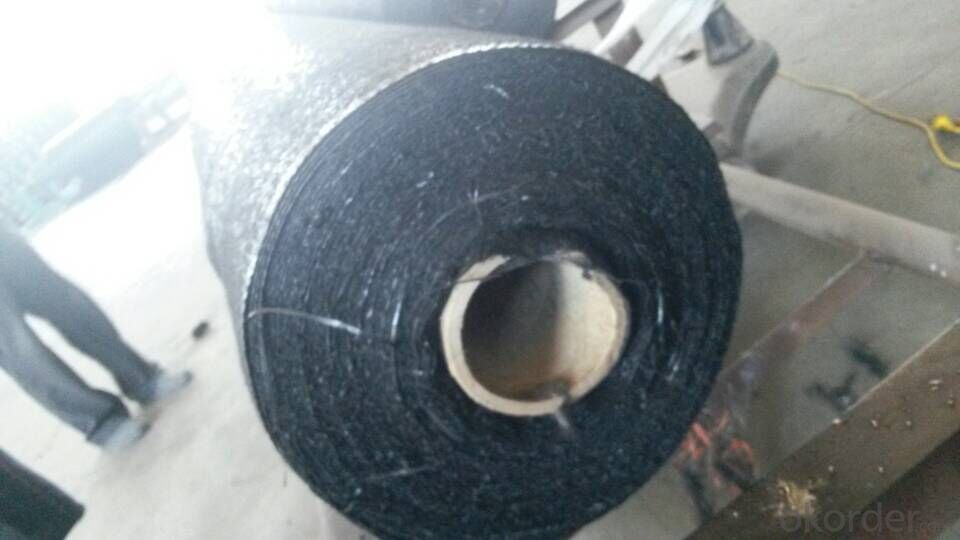- Understanding the Role of Geomembrane Liners in Waste Management
- Innovations in Geomembrane Liners for Water Management
- Geomembrane Liners: A Comprehensive Guide
- The Future of Geomembrane Liners in Civil Engineering
- Geomembrane Liners: Enhancing Landfill Stability
Manager:
WhatsApp:+86 177 0135 2670
Tel:+86 177 0135 2670
Email:marketing@okorder.com
Address:3rd Floor, No.2 Building, No.1 Sanlihe Road
Geomembrane Liners: A Protective Layer for Industrial Slurry Pits
Geomembranes, also known as synthetic liners, are a type of flexible barrier material that is used to provide a protective layer for various applications, including industrial slurry pits. These liners are typically made from high-density polyethylene (HDPE), polyvinyl chloride (PVC), or other polymers and are designed to prevent leakage, contamination, and other environmental issues. In this article, we will explore the benefits and applications of geomembrane liners, as well as some of the factors to consider when selecting and installing them.

The Importance of Protection
Industrial processes often involve the use of slurry pits, which are large containers that hold a mixture of solid particles and liquids. These pits can pose a significant risk to the environment if not properly managed. The primary function of a geomembrane liner is to provide a barrier that prevents the contents of the slurry pit from leaking into the surrounding soil or groundwater. This is particularly important in industries such as mining, where the slurry can contain harmful chemicals or heavy metals that can contaminate local ecosystems.
Versatility in Applications
One of the key advantages of geomembrane liners is their versatility. They can be used in a wide range of applications beyond just industrial slurry pits. For example, they are commonly used in landfills, wastewater treatment facilities, reservoirs, and even in agricultural applications such as pond lining. The flexibility of the material allows it to be easily shaped and installed in various environments, making it a popular choice for many different types of projects.
Material Selection
When it comes to selecting the right geomembrane liner for a project, there are several factors to consider. The type of material used can impact the liner's durability, resistance to chemicals, and overall effectiveness. High-density polyethylene (HDPE) is often chosen for its strength and resistance to a wide range of chemicals, while polyvinyl chloride (PVC) is valued for its flexibility and ease of installation. Other materials, such as ethylene propylene diene monomer (EPDM), may be used for specific applications where their unique properties are beneficial.
Installation Process
The installation of a geomembrane liner is a critical process that requires careful planning and execution. Proper installation is essential to ensure the liner's effectiveness and longevity. The first step is to prepare the subgrade, which involves removing any debris, rocks, or other obstructions that could puncture or damage the liner. Once the subgrade is prepared, the liner is carefully unrolled and laid out, taking care to avoid any wrinkles or folds that could lead to stress points. After the liner is in place, it is secured with anchors or other means to prevent movement, and any seams are sealed using specialized techniques to ensure a watertight seal.
Maintenance and Inspection
Regular maintenance and inspection of geomembrane liners are crucial to ensure their ongoing effectiveness. Over time, the liner can be subject to wear and tear, UV degradation, or damage from external sources. By conducting regular inspections, any issues can be identified and addressed before they become major problems. This can help to extend the life of the liner and prevent costly repairs or replacements.
Environmental Benefits
Beyond their primary function of providing a protective barrier, geomembrane liners also offer several environmental benefits. They can help to reduce the overall environmental footprint of a project by minimizing the need for excavation and the use of natural resources. Additionally, by preventing the leakage of harmful substances into the environment, they contribute to the protection of local ecosystems and water sources.
Conclusion
Geomembrane liners are an essential component in the management of industrial slurry pits and other applications where containment and protection are required. By understanding the benefits, selecting the appropriate material, and following proper installation and maintenance practices, these liners can provide a reliable and long-lasting solution to environmental and containment challenges. Whether you're in the mining industry, wastewater management, or any other field that requires the use of slurry pits, geomembrane liners offer a versatile and effective means of ensuring the safety and integrity of your operations.
- Previous:The Role of Geomembrane Liners in the Construction of Industrial Wastewater Lagoons
- Next:The Role of Geomembrane Liners in the Construction of Industrial Tanks
-
2024-12-05Geomembrane Liners: A Comprehensive Guide






